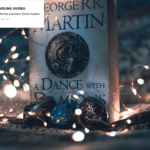Romance novels have consistently captured the hearts of millions of readers worldwide. Their universal appeal lies in their ability to evoke deep emotions, provide escapism, and deliver satisfying endings. Whether you’re a budding author or a seasoned writer, understanding the 12-step formula of romance novels can help you craft compelling stories that resonate with readers and stand out in a competitive market. Below, we dive into each step in detail to help you master this beloved genre.
1. Introduce the Protagonists with Depth
Every romance novel begins with memorable characters. Your protagonists—usually two individuals destined to fall in love—should be multi-dimensional, with relatable traits, flaws, and goals. Establish their personalities, backgrounds, and motivations early to hook readers emotionally.
- Tip: Use vivid descriptions and internal monologues to reveal their innermost thoughts.
- Example: “Emma was a fiercely independent journalist, but beneath her confidence lay a fear of vulnerability.”
2. Create a Powerful Meet-Cute
The initial meeting between your protagonists, often referred to as the “meet-cute,” sets the tone for their relationship. This encounter should be unique, intriguing, or even awkward, sparking curiosity about their dynamic.
- Tip: Aim for an unexpected situation that immediately establishes chemistry or tension.
- Example: A spilled coffee on a crowded street or a mistaken identity at a masquerade ball.
3. Introduce External and Internal Conflicts
Conflict is the lifeblood of any story. In romance novels, these conflicts can be external (family interference, societal norms) or internal (past heartbreaks, fear of commitment). These challenges add depth and make the journey to love more rewarding.
- Tip: Balance external and internal conflicts to keep the narrative engaging.
- Example: A protagonist dealing with a demanding career while navigating trust issues.
4. Establish the Emotional Connection
Beyond physical attraction, your characters need an emotional bond. Build this connection through shared experiences, meaningful conversations, and mutual understanding. This deepens their relationship and gives readers something to root for.
- Tip: Use flashbacks or tender moments to highlight their growing intimacy.
5. Include Moments of Joy and Laughter
Lighthearted moments and humor balance the intensity of conflicts and make your characters more relatable. These scenes help readers connect with your story on a personal level.
- Example: A playful argument over who makes the best pancakes or a funny mishap during a romantic outing.
6. Develop Romantic Tension
Romantic tension keeps readers turning pages. Use slow-burning attraction, misunderstandings, and stolen glances to build anticipation for that first kiss or declaration of love.
- Tip: Pacing is key. Delay gratification to heighten emotional impact.
7. Introduce a Turning Point
At the story’s midpoint, include a significant event that alters the dynamics between the protagonists. This could be a moment of vulnerability, a shared secret, or an external crisis that forces them to rely on each other.
- Example: A sudden illness, a job transfer, or an unexpected confession.
8. Intensify the Conflicts
As the story progresses, escalate the conflicts. Introduce complications or misunderstandings that challenge the relationship, pushing the characters to their limits.
- Example: A long-lost lover reappears, or a misinterpreted conversation leads to doubt.
9. Build Toward the Climax
The climax is the story’s emotional peak, where all conflicts come to a head. This is often a make-or-break moment for the protagonists, where they must confront their fears and make a choice.
- Tip: Keep the stakes high to ensure a satisfying payoff.
- Example: A character must choose between their career and their love interest.
10. Deliver the Grand Gesture
A grand gesture, whether symbolic or dramatic, is a hallmark of romance novels. This act demonstrates the characters’ commitment and willingness to overcome obstacles for love.
- Example: A public declaration of love, a heartfelt letter, or a sacrifice that proves their devotion.
11. Resolve the Conflicts
Tie up loose ends and resolve the primary conflicts. Show how the protagonists have grown as individuals and as a couple, ensuring a sense of closure for the readers.
- Tip: Avoid rushed resolutions; give the characters time to reflect and reconnect.
12. End with a Satisfying Conclusion
The ending should leave readers with a sense of fulfillment. Whether it’s a happily-ever-after or a hopeful new beginning, ensure it aligns with the story’s tone and themes.
- Example: A wedding, a shared dream coming true, or a simple moment of contentment.
Bonus Tips for Writing a Bestselling Romance
- Understand Your Audience: Know the tropes and themes your target readers love.
- Focus on Emotional Depth: Make your readers feel every moment of joy, heartbreak, and triumph.
- Polish Your Writing: Use strong dialogue, vivid descriptions, and flawless grammar to elevate your story.
Conclusion
The 12-step formula of romance novels is a proven blueprint for crafting stories that captivate readers and achieve commercial success. By focusing on character development, emotional connection, and a well-structured plot, you can create a romance novel that stands out in the market.




